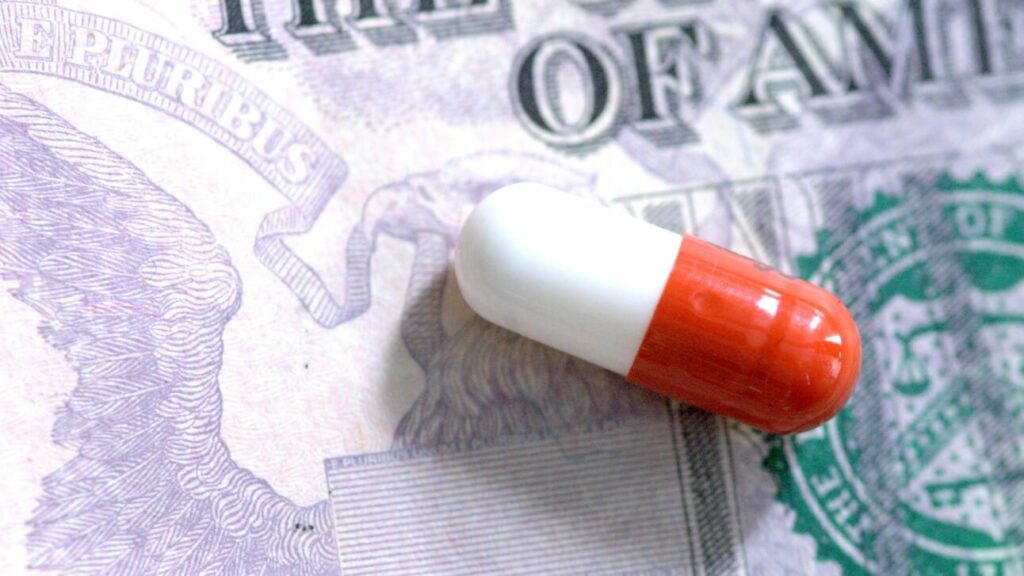If you want to search Cost Curve back issues or link to anything you read here, the web links and archive are online at costcurve.beehiiv.com. You can subscribe there, too.
Talking about 340B research sometimes feels like watching one of those true-crime shows where the circumstantial evidence is overwhelming, and yet there’s no definitive answer to the whodunit. Sure, there’s a motive and an opportunity and a questionable alibi, but with no smoking gun, the case hangs in the balance.
I’m thinking about circumstantial evidence because there is a new report out from Neal Masia and Health Capital Group that found that state Medicaid spending increases as the number of 340B sites per capita rises. That’s an association that holds even after controlling for per-capita income changes and the unemployment rate.
Controlling for those variables, it appears that about $391 in annual spending for each Medicaid patient can be correlated to 340B growth. That’s more than $30 billion a year when spread across the country.
The theory is that 340B stimulates all kinds of less-than-ideal changes to the health system — provider consolidation, shifts in site of care, etc. — that drives up overall spending and can be seen reflected in Medicaid numbers.
This is where all of the caveats about correlation not equally causation and the like go. (It’s also not peer-reviewed, and it was sponsored by Lilly and Gilead.) If this were the only piece of evidence that 340B was raising prices, this might be a thin reed to hang a 340B critique on.
But given all of the other circumstantial evidence in the case, it sure seems like this is a problem, even without a smoking gun.
Endpoints has a piece out asking an interesting question: why is the price of Daraprim, the AIDS drug made famous when Martin Shkreli jacked up its price, still a lot higher than it once was?
The core of the question revolves around a paradox: if Shkreli is long gone, and if Shkreli was the villain, why haven’t prices returned to “normal”?
First, some facts: Daraprim (pyrimethamine, generically) was $17.50 a pill before Shkreli got ahold of it. He hiked the price to $750 a pill. Now, Mark Cuban will sell you a pill for $115. Endpoints points out that $115 is six times the pre-Shkreli price (but doesn’t flip the math and note that $115 is less than a sixth of the post-Shkreli price).
Martin Shkreli was wrong in a lot of ways. He was wrong to increase the price to $750 a pill. He was wrong to do everything he could to prevent marketing of generic versions. He was wrong to be a jerk about all of this. He was wrong to disrespect the Wu-Tang Clan.
But it looks like he was right about one thing: the original, $17.50 price of Daraprim was not sustainable.
The market isn’t big, so there’s not a volume play, and the four generic manufacturers need a price that’s going to be sustainable. The business of selling generic drugs is not an easy one, and the biggest problem with wholesale prices on generics is probably that they’re too low, not too high.
Because of those dynamics, this is a market worth watching. Will prices continue to fall? Will generic manufacturers stick it out? It’s clear that $750 is the wrong price. But it’s looking like $17.50 was the wrong price, too.
Everybody is thinking 2027! I was worried I was premature in writing about the medicines likely to be selected for the next round of IRA price controls, but the Washington Post led its health newsletter today with a reminder that Ozempic/Wegovy/Rebylsus will get price fixed started in February.
Thanks to everyone who filled out yesterday’s poll on when the next Biden administration move on march-in will happen. Right now, the “over” — action AFTER next Friday — is ahead, but it’s literally by a single vote. So at least I’m setting the line right.
Obesity meds will also figure prominently in ICER’s next “fair coverage” report, where ICER looks to see if payers are putting up access barriers to medicines that ICER says are good deals. These are not particularly good or useful reports for reasons I’ve whined about before, but the upcoming edition will look at how insurers are covering Mounjaro and Wegovy, and that should be eye-opening.
The Humira biosimilar market is broken, and you’ve probably heard so much about that that you’ve already skipped to the next bullet. If you haven’t, this long Reuters piece is pretty good. It’s also current, which makes it a lot more usable than academic work that can’t keep up with the market. (e.g. a just-published JAMA research letter looking at formulary coverage … through January.)
Not 48 hours ago, I wrote a whole bunch about the how important simplicity is when talking about health care, so it’s probably hypocritical of me to criticize this Bloomberg piece giving a bird’s-eye view of drug pricing in the United States. But it turns out that squeezing all of the nuance out of a topic does no one any favors.
I always found the whole case against Gilead for slow-walking development of an HIV med to be a weird longshot, and I haven’t written that much about it because it just didn’t seem to be representative of anything. Gilead has now agreed to settle — its statement is here — so I’ll go back to not writing about it.
Header image via Flickr user David Goehring.





